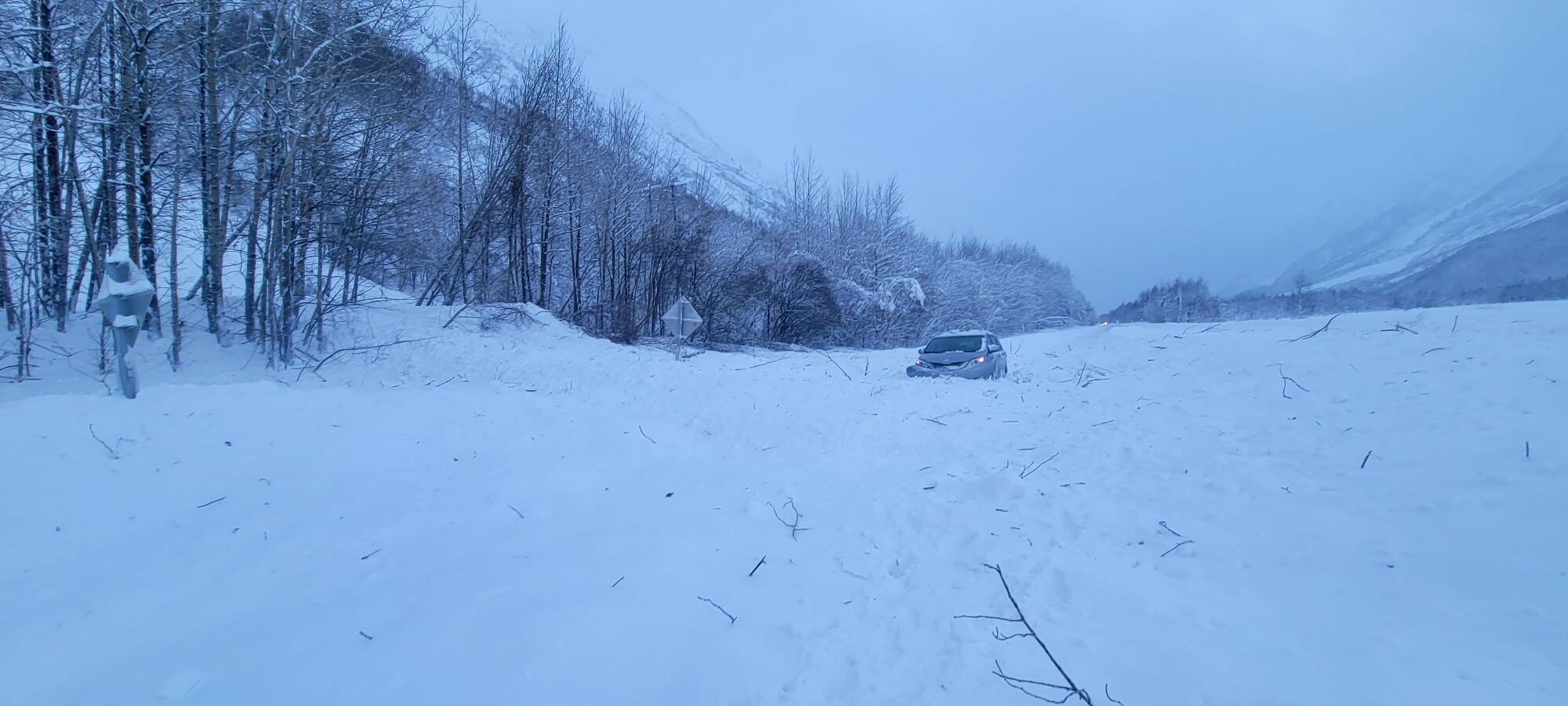Christmas Eve traffic between most of the Kenai Peninsula and Anchorage was severed after a large avalanche blocked part of the Seward Highway near Tern Lake.
The Alaska Department of Transportation and Public Facilities reported on Sunday morning around 8:30 that an avalanche had occurred at Milepost 37 of the Seward Highway, approximately where the highway intersects with the Sterling Highway, also called the “Y.” The intersection is the only way motorists traveling from Anchorage or other towns can access major towns on the Kenai Peninsula.
At the time the department announced that the avalanche had closed all lanes of travel, it estimated that the avalanche debris — about 400 feet wide by 3 feet deep — would take more than eight hours to clear. The highway reopened to traffic in both directions at 3:15 p.m. Crews, the department said, continued to monitor the area and clean up debris after the road reopened.
Alaska Department of Transportation and Public Facilities Communication Manager Danielle Tessen said Sunday that crews responding to the avalanche site came from Soldotna, Seward and Girdwood. Kenai Peninsula Borough Emergency Manager Brenda Ahlberg said Sunday that the borough maintained contact with the responders in case additional support from the Office of Emergency Management was needed.
Historical data provided by the Alaska Department of Transportation and Public Facilities show that more motorists travel on Christmas Eve than on Christmas Day.
For example, the department reported that roughly 1,400 motorists traveled on the Seward Highway at Milepost 45 near Summit Lake last Christmas Eve, including nearly 600 that traveled south toward the “Y.” That’s compared to about 950 vehicles that traveled the same part of the highway on Christmas Day, roughly 500 of which were also southbound. Similar trends were observed in 2021.
Cooper Landing Emergency Services took to Facebook on Sunday evening to praise the actions of one motorist, who was traveling with her three young children and was caught in the avalanche. The mom had packed emergency snow gear for the three kids and left the scene of the avalanche “as quickly as possible,” which is recommended in case of additional slide action.
“This is a valuable lesson to keep emergency bags packed even for a routine trip,” the agency wrote.
Sunday’s avalanche near Tern Lake occurred about an hour before DOT announced that two other avalanches had closed the Richardson Highway in two places, at Thompson Pass and at Paxon. It struck amid a winter weather advisory for the western half of the Kenai Peninsula, during which several inches of snow were dumped in the area.
Per the transportation department, avalanche risk increases with large quantities of new snow or rain, strong winds and rapid changes in temperature. If an avalanche blocks part of the highway, motorists should not try to drive through it, but rather drive to a safe place outside of the avalanche area. Motorists should always travel with extra supplies during the winter.
More information about safe travel in areas prone to avalanches can be found on the Alaska Department of Transportation and Public Facilities’ avalanche webpage at dot.alaska.gov/stwdmno/avalanche.shtml.
Reach reporter Ashlyn O’Hara at ashlyn.ohara@peninsulaclarion.com.

